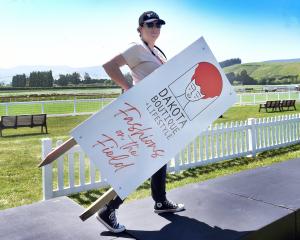An aircraft with links to one of the most fanciful vehicles ever to land in the Antarctic is being restored at Wanaka Airport.
The plane is a Beech Staggerwing biplane used by US explorer Admiral Richard E. Byrd, who was the first person to fly over the South Pole, along with a pilot and two companions.
The Staggerwing was not the plane used in that historic flight 86 years ago. Its moment in Antarctic history came 10 years later.
Callum Smith, whose company Twenty Twenty Four Ltd is restoring the Staggerwing, said it was part of Admiral Byrd's 1939-40 expedition to study cosmic rays over the Antarctic.
Labelled ''the Lear jet of its day'', the Staggerwing provided speed and comfort.
But, as impressive as it was, it had nothing on the vehicle designed to carry it around the Antarctic.
That vehicle was the ''Snow Cruiser'' - a 17m-long, 34-tonne wheeled vehicle that greatly impressed the American public on its way to the Antarctic, but turned out not to be fit for purpose.
Described as a ''gargantuan behemoth'' by some commentators, it was powered by two six-cylinder diesel engines, and had room for five crew and a year's supplies.
The Staggerwing now in Wanaka was attached to the roof.
The expedition arrived at the ''Little America III'' base, on the Ross Ice Shelf, in January 1940.
As film of the arrival shows, the snow cruiser had problems right from the start, crashing through the ramp as it descended from ship to ice.
Admiral Byrd had planned to travel thousands of kilometres in the snow cruiser - the Staggerwing helping expedition members carry out their studies at various altitudes.
But the snow cruiser's big, smooth, rubber tyres were unable to get much traction on the ice and snow, and it made just a few relatively short trips.
It was found to be more effective going backwards than forwards, but even then often became stuck in deep snow and crevasses.
It was eventually abandoned.
The snow cruiser was last seen in 1962, and is believed now to be either covered by a thick layer of snow or lying on the bottom of the Southern Ocean.
Another theory suggests it was taken by the Soviet Union.
Mr Smith said the Staggerwing ended up in Australia, serving with the Royal Australian Air Force for a time and eventually becoming a top dresser.
It then had a crash, on an outback cattle station near a town called Dingo, and eventually found its way into the hands of Hong Kong-based Boeing 777 pilot Cam Hawley and wife Tracey, who are having it restored.
Mr Smith said an engine was being built in the United States, and most of the other work was being done in Wanaka and Balclutha.
The restoration is expected to take about three years.












